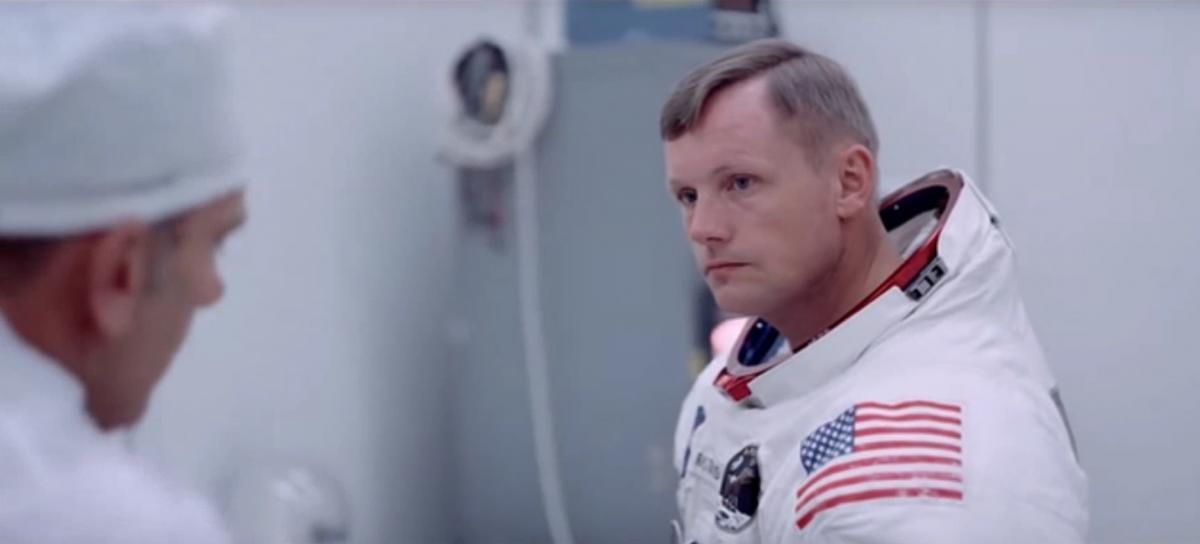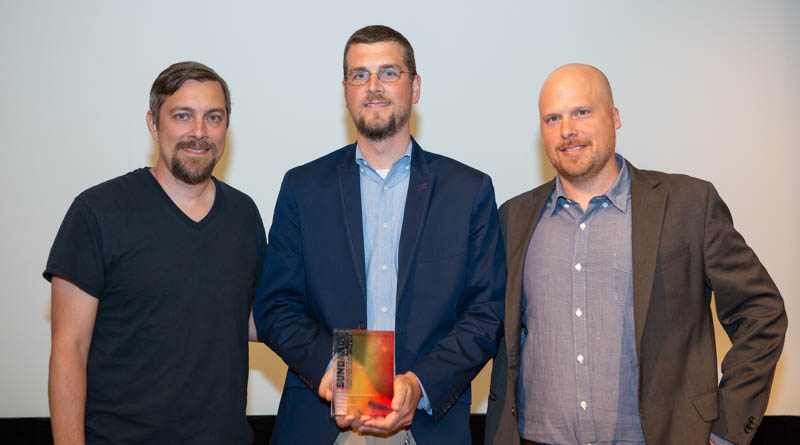
Apollo 11 Documentary Creators Speak at National Archives for Film Screenings
By Liam Behan | National Archives News
WASHINGTON, July 26, 2019 — Fifty years after the Apollo 11 crew walked on the Moon, many memories recall scratchy television images and poor-quality videos. Thanks to a collaboration between documentary filmmakers and the National Archives, audiences can now view pristine film footage of the historic mission from lift-off to landing on the Moon to splash-down.
In the William G. McGowan Theater on July 18, the National Archives hosted two screenings of the award-winning documentary Apollo 11, followed by a panel discussion with director Todd Douglas Miller, producer Thomas Petersen, and National Archives Chief of the Motion Picture, Sound, and Video Branch, Dan Rooney.
Archivist of the United States David S. Ferriero introduced both events in the afternoon and evening.
“Tonight’s film is especially meaningful for us at the National Archives because the documentary features previously unseen large-format film footage,” he said in his opening remarks to the evening event. “Staff in our Motion Picture, Sound, and Video Branch and the Motion Picture Preservation Lab, as well as in various other offices across the agency, were critical in enabling access to and digitization of these holdings. Their contributions to the Apollo 11 documentary underscore the importance of our mission. By preserving and making accessible these film reels, they have given the world an unprecedented and breathtaking glimpse of this historic milestone.”
These events commemorated the 50th anniversary of the Apollo 11 mission and the recent release of the documentary, which consists largely of archival footage that was provided by the National Archives and digitally scanned by the film’s production company.
“What we wanted to do was tell the mission story in a new way,” said Miller. “With all of this newly discovered footage, we were able to tell the story of Apollo 11 in a unique way.”
After its initial release at Sundance Film Festival in January and subsequent premieres in theaters across the country and on CNN, Apollo 11 has been praised for its use of archival footage.
At Sundance, Apollo 11 won a U.S. Documentary Special Jury Award for Editing. “It was funny because they [the Special Jury] were deciding between the editing award or the cinematography award,” Miller joked. “It was funny to see the film considered for cinematography since almost all of the shots are by Apollo astronauts.”
“You’re working with some of the best shots in cinematic history with some of these moments,” Miller said, speaking of the cinematography and camerawork in a film primarily shot by non-traditional camera crews. “Name me a better shot than Aldrin pointing the camera at a shot of the Earth . . . or the footage of the Saturn V launching and leaving Earth’s atmosphere.”
During the afternoon panel discussion, the creators of Apollo 11 wanted to show their appreciation to the crew from the National Archives that helped bring the large film reels to life in high quality. Miller unwrapped the Sundance award and gave it to the Archives.
Miller elaborated on the creative techniques used in order to accurately showcase the experience of the Apollo 11 mission. “We wanted to fill in the gaps where we could,” he said. “They weren’t filming everything in the Apollo 11 mission . . . so for certain shots we used footage from later Apollo missions and collaborated with the crew to make sure it was accurate to their experience too.”
The production crew was motivated by the 11,000 hours of uncataloged audio recordings and previously unseen large-format film footage they had to sift through. This massive collection had the potential to recreate the Apollo 11 mission in a way that had not been previously done.
Rooney commented on the importance behind showing the mission entirely through archival footage to ensure the film’s accuracy to history. Petersen elaborated on Rooney’s comments, “The film is so technically accurate [to the event],” he said, “you might never catch everything.”
The complete recreation of a historic event through archived film is an unconventional editing experience, and director Miller expanded on his experience putting this documentary together.
“While editing, there were so many overwhelming moments,” he said. “Watching the raw footage of events like crossing the terminator or the Eagle landing sequence alone in a room was so exciting. I felt so honored being able to work with film like this.”
Miller ended both of the day’s panels with a comment to Petersen about their involvement in scanning and editing the archival footage. “It was like our birthday every day, getting to work with hard drives of footage no one has seen since it was made,” he said.
The evening event was brought to the public by the National Archives Foundation through the generous support of the Boeing Company. The film discussion is now available to view on the National Archives YouTube channel.

